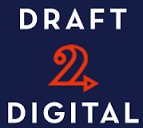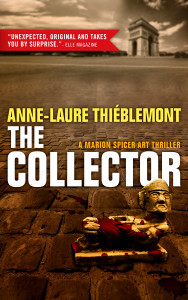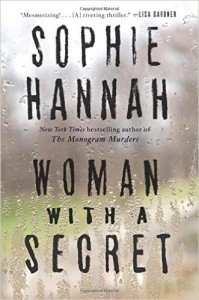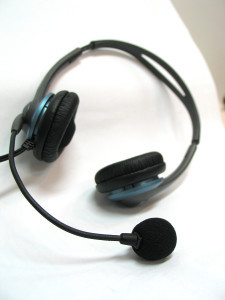Elizabeth Spann Craig's Blog, page 116
August 23, 2015
Raising Questions in Our Stories
by Elizabeth S. Craig, @elizabethscraig
One thing that can trip up even experienced writers is giving everything away in the story too quickly.
It’s always a temptation for me. I tend to want to reveal things too quickly in my story. I want to explain everything as it happens so that readers won’t be confused.
But when I reveal too much, I end up halfway through the story without enough material to make a full-length novel.
Areas where it may help to raise questions:
Questions about character behavior. Sometimes character motivation isn’t clear. But as long as that character is behaving consistently, readers will want to learn why the character is acting that way.
Backstory is another important story element to release in bits and pieces. For one thing, no one likes a backstory dump–it’s boring and can seem irrelevant to readers who don’t know the story’s big picture like the author does. Backstory can be character motivation or history or anything else in the past that plays into the plot or character development.
Particularly in a mystery, we want characters with secrets. No one is going to want to be completely upfront with investigators. There’s information that suspects will want to withhold. They won’t want to immediately confess to the affair or the spotty criminal record in another town or the fact that the murder victim had been blackmailing them about some past indiscretion.
It’s also important in a mystery to keep little details/information out of the hands of the sleuths. Where were the suspects really when the crime was committed? Why doesn’t Annie like Jim? These details will vary, depending on genre.
Benefits of raising questions to be answered later:
These questions act as teasers for our readers and can prompt them to keep turning pages to find out more.
Raising questions instead of providing all the answers as we write can help with story pacing.
Unanswered questions, if the questions are big enough, can also serve as subplots through our main story. Will Mark be fired from his new job? Are Katie’s parents moving in with her? Is Tom going to be able to fight his addiction to alcohol or will he succumb to it?
An important note: when we’re raising questions, we need to keep track of all of them. That way we don’t leave any loose ends at the story’s end. We want to make sure that there is a payoff when the readers have been patient to wait for the answers.
Unanswered questions in our stories help with pace and keep reader interest:
Click To Tweet
Image: MorgueFile: Seemann
The post Raising Questions in Our Stories appeared first on Elizabeth Spann Craig.
August 22, 2015
Twitterific Writing Links
by Elizabeth S. Craig, @elizabethscraig
Twitterific writing links are fed into the Writer’s Knowledge Base search engine (developed by writer and software engineer Mike Fleming) which has over 30,000 free articles on writing related topics. It’s the search engine for writers.
(developed by writer and software engineer Mike Fleming) which has over 30,000 free articles on writing related topics. It’s the search engine for writers.
How to Write a Fantasy Series: http://ow.ly/QZpXq @nownovel
Who’s Afraid of Reader Analytics? Data on where readers stop reading: http://ow.ly/Re5B4 @Porter_Anderson
Tricks for Writing in Public: http://ow.ly/QZqKf by Tina Jens
Different POVs for Part 1 and Part 2? http://ow.ly/QZqz7 @glencstrathy
A Simple Landing Page Strategy for Increased Newsletter Subscribers: http://ow.ly/QZqlm @HennekeD
Money matters for writers: http://ow.ly/QZrxR @mikemartinez72
The Problem With Flash Forwards as an Opening Scene http://ow.ly/QZq2B @Janice_Hardy
Mega-Wattpad Stardom: The Before And After Of Anna Todd: http://ow.ly/Re5G8 @Porter_Anderson @imaginator1dx
Calibre: Adding a blurb to the front of a book: http://ow.ly/QZqCE @dearauthor
Writing urban fantasy in a secondary world: http://ow.ly/QZr8a @maxgladstone
How To Liven Up Your Story: http://ow.ly/QZrH0 by Aaron Miles
Keyboard Shortcuts for Novelists (cartoon by @tomgauld) http://ow.ly/QZrQQ @newyorker
Where to send your SFF book: http://ow.ly/QZr1K by Steve Fahnestalk
After The Hype And Drama: Balancing Trad And Indie Interests: http://ow.ly/R4teN @Porter_Anderson @ThoughtCatalog
Revision Techniques: http://ow.ly/R4thO @janetsfox
How to Look Good on Your Webcam: http://ow.ly/R4tkD @rachellegardner
How to Tell a Story: Script Writing vs. Novel Writing: http://ow.ly/R4tWb @whisperproject
Got a Pen Name? Here’s How to Market Your Books: http://ow.ly/R4to8 @CaballoFrances
Writers as Project Managers: http://ow.ly/R4twt @PascalInard
Why We Need to Appoint a Social Media Executor Now: http://ow.ly/QZq6C @annerallen
Saving Our Youngest Characters: Neonatal Information for Writers: http://ow.ly/QYf0N by Meredith Pritchard
Tips for promoting diverse novels: http://ow.ly/QYf37 from Writing With Color
Mindmapping: a pantser’s path to the perfect story: http://ow.ly/QYeOI @OrlyKonigLopez
5 Ways To Boost Your Productivity: http://ow.ly/QYeYM @MariahEWilson
Writing With Confidence: http://ow.ly/QYeXz by A. Howitt
5 Ways to Make Sure Your Ending Has No Payoff: http://ow.ly/QYf4b by Oren Ashkenazi
Kicking Great Dialogue up to Killer Dialogue (with Interstellar): http://ow.ly/QYeRd @SeptCFawkes
Simple and Easy Strategies to Stay Organized: http://ow.ly/QYeTh @ArtistThink
Avoid Getting Tenses in a Tangle: http://ow.ly/QYeVz @AJHumpage
4 Things Dexter Taught About Writing Antiheroes: http://ow.ly/QYeJX @EmilyWenstrom
3 Keys To A Successful Story Opening: http://ow.ly/QYeMT @stephmorrill
Write Great Dialogue: http://ow.ly/QY90N @angee
How to Use the Passive Voice Correctly: http://ow.ly/QY9mS @grammarly
4 Ways to Jump-Start a Slow Beginning: http://ow.ly/QY93e @mythcreants by Chris Winkle
The Second Draft: http://ow.ly/QY651 @mbtinsley
Great Character: Howard Beale (“Network”): http://ow.ly/QY9kb @gointothestory
How to Start a Blog: A Step-by-Step Guide for Writers: http://ow.ly/QY98b @Susan_Shain
Improve Your Writing Through the Power of Observation: http://ow.ly/QY9ej by Barbara Baig
5 Tips for Turning Word Docs into Blog Posts Fast: http://ow.ly/QY9FU @ShelleySturgeon
Profile of a killer: http://ow.ly/QY8Qx by John Katzenbach
How To Build Your Own Self-Hosted Author Website In Under 30 Minutes: http://ow.ly/QY61i @thecreativepenn
Season 2 of “True Detective” went wrong. Cautionary Lessons for Writers: http://ow.ly/QY62k @kristenlambtx
Script Analysis: “Flight”: Psychological Journey: http://ow.ly/QY8Wi @gointothestory
How to Write Your Characters’ Thoughts: http://ow.ly/QSV03 @cherylrwrites
Research Mode vs. Writing Mode: http://ow.ly/QSVz3 @tamsinsilver
Kill Your Darlings: 5 Writers on the Cutting Room Floor: http://ow.ly/QSVvb @chloekbenjamin
5 Tips for Making Scenes in Your Novel More Tense and Interesting: http://ow.ly/QSVlz @MartinaABoone
5 tips for introverted writers: http://ow.ly/QSV20 @MenwithPens
Pleasures of the Literary Meal: http://ow.ly/QSVDo @KitchenBee @newyorker
What Readers Want: Series vs. Standalone Books: http://ow.ly/QSVsK by Big Al
Creating an Author Business Plan: Our Marketing Plan: http://ow.ly/QSVGv @MarcyKennedy
Unsticking Yourself From Writer’s Block: http://ow.ly/QSUVV @karamb75
Your LOOK INSIDE! Book Preview: Will it Turn Readers Away or Close the Sale? http://ow.ly/QSVps @annerallen
Why Attend Writer’s’ Conferences: http://ow.ly/QSUS9 @DeeWhiteAuthor
Lies, Denial, and Buried Secrets: How to Create Dimensional Characters: http://ow.ly/QSVBA @kristenlambtx
Fictional World-Building: 5 Types of Societies: http://ow.ly/QQSbv @betternovelproj
Do Your Best, Make Adjustments, Move On: http://ow.ly/QQS0K @finallywriting
The 12 Tools To Use Before Self-Publishing A Book: http://ow.ly/QQRcj @LynnUsrey
3 Surprises We Need In A Story: http://ow.ly/QQRy0 @MiaJouBotha
The Case For Blurring the Lines Between Good and Evil: http://ow.ly/QQSfb @betternovelproj
5 Writing Challenges All Writers Face (and How to Deal With Them): http://ow.ly/QQRsG @cherilynnveland
8 Tips for Writing a Synopsis: http://ow.ly/QQR9d @ceciliaedits
6 Ways To Achieve The Perfect Ending To Our Story: http://ow.ly/QQRNn @DeanElphick
How to Get Early Feedback on Your Book Idea or Manuscript: http://ow.ly/QQS7Y @NinaAmir
Characters: Tormenting them for the sake of plot: http://ow.ly/QQRjh by Sue Bradford Edwards
The Book Launch Checklist: http://ow.ly/QQREO @10MinNovelists
4 Real-Life Starting Points for Story Ideas: http://ow.ly/QQRoQ @WanderfulWorld1
How Serials Can Gain You Fans: http://ow.ly/QNYr0 @willvanstonejr
On interior book design: http://ow.ly/QNYYg @lansi26
Writing Mystery and Suspense Fiction: Can You Ever Really Know a Person? http://ow.ly/QNYez @ShelleySturgeon
How Actions Determine Character & Arc: http://ow.ly/QNZUF @hookedonnoir
Authors’ New, Free Entry into Libraries: SELF-e: http://ow.ly/QNZkI @Porter_Anderson @libraryself_e
Creative Constraints In Writing: http://ow.ly/QNXTY @rsmollisonread
6 Reasons to Read Indie Books http://ow.ly/QNZ4L @HollyACave
How and Where to Obtain Book Reviews: http://ow.ly/QNZSe by James Rose
Screenwriting: 3 Traps to Avoid in Love Stories: http://ow.ly/QO07T @dougeboch
Self Publishing:on …Instagram? http://ow.ly/QNYNe @etmarketsbooks
Hacking Your Reader’s Brain: http://ow.ly/QNZIa @JeffGerke
Pitch Don’ts for the Fledgling Conference Goer: http://ow.ly/QO047 @agentsaba
Why That Ebook May Cost More Than The Hardcover: http://ow.ly/QY8sY @Porter_Anderson @kristinerusch
How to build an email list the easy way: http://ow.ly/QLOTB @ActivePatience_
How to Choose the Right Price for Your Book: http://ow.ly/QLNur from Fix My Story
Book Endorsements and Why We Need Them: http://ow.ly/QLO35 @MSaintGermain
How to Write a Book From Outline to Finish Line: http://ow.ly/QLPeo @shelleyhitz
5 Ideas for Author Newsletter Content: http://ow.ly/QLOev @sarahforgrave
10 Things to Know About Working With Twitter: http://ow.ly/QLMRH @ellisshuman
The post Twitterific Writing Links appeared first on Elizabeth Spann Craig.
August 20, 2015
Demographics on Wattpad
by Elizabeth S. Craig, @elizabethscraig
I’ve had a profile and books available on Wattpad for over a year. Wattpad is an online reading platform. It’s a social way to share stories, with readers commenting on chapters as we release them. I’ve written about getting on Wattpad and my thoughts on the platform.
Wattpad is free for readers. I have enough books available for sale that offering something for free for exposure isn’t a concern. And it is all about exposure: there are over 40 million users.
To access this feature, you’d go to your book page and click on the graph icon right next to “edit story.”
It’s interesting to see when people were reading and when they were most likely to vote or comment on a chapter. We could use this data to figure out what days of the week might be best for us to post updates on.


Here we can see which parts generated more engagement. This could give us real data on where our writing is resonating with readers.

We can also get interesting data on our readers–their ages and gender. I will say that this site skews female and young. But this is the only publishing platform where a key part of my readership is 13-18 years old.
And, below, the map is pretty cool. Wattpad has great global reach, getting my stories into the hands of people who may not access it otherwise.

For me, this provides an interesting glimpse into my readers on the site. It helps reinforce that I’m doing the right thing by uploading to Wattpad. I’m reaching a younger demographic than my usual reader base, and I’m also reaching readers from around the world.
Anyone else on Wattpad? Any other ideas for reaching new demographics with our stories?
The post Demographics on Wattpad appeared first on Elizabeth Spann Craig.
August 16, 2015
Marketing and Publishing Updates
by Elizabeth S. Craig, @elizabethscraig
A few odds and ends and updates:
Draft2Digital: I’ve used Smashwords since I started self-publishing. It’s been convenient for me to upload one file there for distribution to multiple retailers. But I’ve experimented lately with Draft2Digital, a similar distributor (these distributors are paid a percentage of our book sales for our convenience). I really like its user interface: it’s a nice, clean look and the site is fairly easy to navigate.
I’ve found I especially like the email updates they send that let me know when my book has gone live on the different retailers or when my price changes go through on the various sites. It’s also nice that I can make my book free on Nook through Draft2Digital…that seemed to make Amazon move very quickly to price match when my book was free on the Barnes & Noble site.
I’m also paid more frequently with Draft2Digital than I am with Smashwords (payment is quarterly at Smashwords). 
Pen name tidbit: Apparently, my readers got an email from Amazon about Race to Refuge, which I wrote as Liz Craig. I did list myself as the publisher, but didn’t put myself as a contributor in the author section on the KDP dashboard. I’m thinking the reason readers received emails is because I linked to the book on my Amazon Author Central. I guess, since Liz is a nickname, there was no trouble claiming it. I never had such luck with my Riley Adams series for Penguin, which has a different Amazon Author Central page.
Penguin Random House reaching out: I was blinking in amazement on August 12th. After writing a post on the 3rd pointing out ways that my publisher, Penguin-Random House, and other traditional publishers could improve, I was surprised to see something new in my email inbox: an author newsletter. This was the first author newsletter I’ve received and I’ve written for Penguin since 2010.
“Welcome to this month’s Penguin Random House Author News! This monthly newsletter offers Penguin Random House highlights, tips to help you connect with readers, publishing industry news, and more. It also includes information on updates to the Author Portal.”
There were links to three stories on writing, promoting, and fair use. And even a webinar signup on learning about the role of networking in promoting.
There were 7 links to industry articles (from everything from The New Yorker to The Bookseller and GalleyCat).
Followed by…a request for feedback. (!)
On Friday, even more astoundingly, I got a check. Out of the blue. A check I was expecting in October. According to the letter that accompanied it, however, this is likely due to the merger between Penguin and Random House and not the publishing world as we know it radically changing.
But the newsletter is a step in the right direction. I definitely enjoy getting more information from my publisher. It’s a good thing.
Got any updates of your own? What are you trying out? Thoughts on pen names and making them work better for us?
Draft2Digital, pen names, and slow publishing changes:
The post Marketing and Publishing Updates appeared first on Elizabeth Spann Craig.
August 15, 2015
Twitterific Writing Links
by Elizabeth S. Craig, @elizabethscraig
Twitterific writing links are fed into the Writer’s Knowledge Base search engine (developed by writer and software engineer Mike Fleming) which has over 30,000 free articles on writing related topics. It’s the search engine for writers.
(developed by writer and software engineer Mike Fleming) which has over 30,000 free articles on writing related topics. It’s the search engine for writers.
MacGuffins in crime fiction: http://ow.ly/QUB0m @mkinberg
5 tips for handling amnesia and back story: http://ow.ly/QKI91 @Roz_Morris
Dialog Writing 101: Conversational Mechanics: http://ow.ly/QKIIp @CSLakin
4 Tips For Finding Beta Readers: http://ow.ly/QKJ1g @woodwardkaren
Tips for adding to a too-short draft: http://ow.ly/QKItF @Roz_Morris
Sharing Your Space: Where we Write: http://ow.ly/QKHSf @KeithCronin
Why Do I Suddenly Need to Vacuum Every Time I Sit Down to Write? http://ow.ly/QKHNk @AnneGreenawalt
Should You Write For Yourself Or Your Audience? http://ow.ly/QKI3T @DonnaRadley
How Setting Affects Your Characters: http://ow.ly/QKIT2 @writers_write
How to Rekindle Your Writing When You’ve Lost Touch: http://ow.ly/QKHFY @aliventures
Screenwriting: Movie Analysis: Jurassic World: http://ow.ly/QKHu5 @gointothestory
Sex and Science Fiction: http://ow.ly/QKHDC @hangingfire
Front and Back Matter in Books: http://ow.ly/QLOr7 @msbessiebell
Book promo: joint events with non-indie authors: http://ow.ly/QLNg9 @alison_morton
Why Authors Must Be Genuine on Social Media: http://ow.ly/QLNFe @K8Tilton
2 Questions to Book Marketing Success or Failure: http://ow.ly/QLN6j @janvbear
Why Writers Conferences Are Worth It: http://ow.ly/QLNOq @K8Tilton
4 Don’ts (Plus 1 Do) for Authors on Facebook: http://ow.ly/QLOxQ from Fix My Story
Quick Writing Fix: Improving Story Endings: http://ow.ly/QKIC6 @lindasclare
How to Create a Website as a Writer at Low Cost: http://ow.ly/QHXg8 @Book_Arch
How to Write Internal Dialogue: http://ow.ly/QHWPc @marcykennedy
5 Free “Must Use” Tech Tools for eBook Authors: http://ow.ly/QHX1E @TracyRAtkins
3 Components to Writing a Successful Collaborative Novel: http://ow.ly/QHWir @KLHCreateWorks
The Real Price of Traditional Publishing: http://ow.ly/QHXAt @deanwesleysmith
How to offer signed books at low cost: http://ow.ly/QHXGx @DebbieYoungBN
The Key to Writing Good Action Scenes (Hint: It’s Not Just the Action): http://ow.ly/QHWV3 @KMWeiland
3rd Level Emotions: http://ow.ly/QHX8V @DonMaass
Tips For Being a Writer from a Journalist and Novelist: http://ow.ly/QUlPP by Anne-Laure Thiéblemont, @LeFrenchBook
3D Cover Generators: http://ow.ly/QHWwU @joleene_naylor
Want to self-publish, but can’t get your rights back? #FutureChat: 4pBST/11aET (now) @Porter_Anderson
5 Key Ways To Entice Readers with Imagery: http://ow.ly/QHXrb @JordanDane
How Dead-End Dialogue Kills Pacing: http://ow.ly/QHW4H @amyknichols
The Midpoint Reversal: http://ow.ly/QHWpK @Janice_Hardy
Music For Writers: @MattHaimovitz’s Cello Solos Go Into ‘Orbit’: http://ow.ly/QSRvy @Porter_Anderson
4 types of writers…that will thrive” in the enriched books era: thhttp://ow.ly/QSRPy @Porter_Anderson @petermeyers”
Print Vs. Ebooks: Does It Pay To Do Print? http://ow.ly/QHukF @mollygreene
How to Describe a Place: http://ow.ly/QHuoC @JillWilliamson @GoTeenWriters
How to Win a Twitter Pitch Contest: http://ow.ly/QHuhn @BillFerris
100 Random Storytelling Thoughts And Tips: http://ow.ly/QHtWl @ChuckWendig {lang.}
The Difference Between Setup and Setup http://ow.ly/QHuI1 @Janice_Hardy
How to Craft a Page-Turning Plot: http://ow.ly/QHtKC @cathyyardley
How Novelists Can Make “Unbelievable” Stories Feel Real: http://ow.ly/QHuEj @michael_hauge
Words are Cheap: http://ow.ly/QHtz9 @rachel_aaron
Could Morning Pages Help You Balance Personal and Paid Writing Work? http://ow.ly/QHtvn @MarianSchembari
If You’ve Only Got 15 Minutes, Is It Even Worth Writing? http://ow.ly/QHtsh @aliventures
The only way to succeed is to keep showing up: http://ow.ly/QHtGG @kseniaanske
Want to self-publish but can’t get your rights back? http://ow.ly/QUeiS @Porter_Anderson @HarryOnTheBrink
The Power of What’s Left Unsaid When Crafting Dialogue: http://ow.ly/QHutI by Bonnie Randall
The Perks of Writing Micro Fiction: http://ow.ly/QFGtn @AnneGreenawalt
3 Questions for a Teachable Writer: http://ow.ly/QFGgM @angiedicken
Finding the rhythmic beat to your writing: http://ow.ly/QFGkw @SueColetta1
Writing Physical Challenges: http://ow.ly/QFGnG @FionaQuinnBooks @KatieMettner
Why Your Characters Are Boring: http://ow.ly/QFGhB by BD Schmitt
Beyond Google: a Search Engine Just for Writers: http://ow.ly/QPm7q @amzoltai @hiveword
How to Create a Convincing Good Guy: http://ow.ly/QFGu9 @AJHumpage
“Speechtags are of the Devil,” He Said: http://ow.ly/QDx1d @JamesTuckwriter
10 Reasons for Authors to Blog: http://ow.ly/QFGvH @RobinHoughton
6 Terror Tactics For Scary Villains: http://ow.ly/QFGg1 @sacha_black
How to get our book noticed: http://ow.ly/QFGlZ @rxena77
The 5 Absolute Dimensions of Character Personality: http://ow.ly/QFGre @writingeekery
100+ Places to Market a YA Book: http://ow.ly/QFGjK @booklaunchdemon
Misspelled and Misused Foreign Phrases: http://ow.ly/QFGeR @Jen_328
Writing for Others, Writing for Yourself: http://ow.ly/QFeZk @nevalalee
Finding the rhythmic beat to our writing: http://ow.ly/QFfc0 @SueColetta1
500 Great Words for Writing Love Scenes: http://ow.ly/QFfbe @BrynDonovan
Creative Barriers and Self-Perception: http://ow.ly/QFf7c @CreativeKatrina
On Prologues: http://ow.ly/QFeWO by Marina Montenegro
A Fiction Plotting Essentials Checklist: http://ow.ly/QFeUC @angee
The difference between Act One midpoint and Act One end: http://ow.ly/QFf9N @gointothestory
Why Beta Readers Can Revolutionize Our Writing: http://ow.ly/QFf69 @MudpieWriting
Writing Emotional Scenes: http://ow.ly/QFfcV @enderawiggin
How to Use Platform to Sell Your Books: http://ow.ly/QFf8P @maria_ribas
5 Ways To Describe Characters: http://ow.ly/QFf7T @writers_write
Keeping grief-stricken characters from becoming monotonous: http://ow.ly/QKIe2 @Roz_Morris
3 Questions to Ask After a Rough Critique: http://ow.ly/QFf54 @artofstoriesAB
6 Self-Editing Tips: http://ow.ly/QDxvM @ProWritingAid
10 Most Disgusting Words: http://ow.ly/QILjT @CultVultures
3 Crucial Editing Phases We Need to Sell More Books: http://ow.ly/QDxrK @CSLakin @BookBubPartners
10 Tweets to Never Send: http://ow.ly/QDx5T @mollygreene
4 Steps for Organizing Plot Ideas Into a Novel: http://ow.ly/QDxor @jodyhedlund
How to Craft a Page-Turning Plot: http://ow.ly/QDyFR @cathyyardley
Why Social Media is Still Your Best Path to Book Visibility: http://ow.ly/QHu5G @annerallen
Pre-Orders, Sticking on Amazon, and Hitting Best Seller Lists: http://ow.ly/QDy0v @goblinwriter
Business Musings: The Crappy Parts of the Job: http://ow.ly/QDwNg @kristinerusch
7 Things That Will Doom Your Novel: http://ow.ly/QDxLL @jamesscottbell
Enhanced ebooks: do books need innovating? http://ow.ly/QHqEG @Porter_Anderson @camillelaguire
Why Podcasting Interviews Are Essential: http://ow.ly/QDxeu @AudioMktgExpert
11 Author Website Must Have Elements: http://ow.ly/QDxgJ @writerplatform
7 Tips For Starting Your Story With a Bang: http://ow.ly/QDwSX @bryanjcollins
Witness confusion over passage of time in crime fiction: http://ow.ly/QHqmJ @mkinberg
How to Improve Your Writing: http://ow.ly/Qzir4 @writingforward
Common Story Problems with Simple Fixes: http://ow.ly/Qzi5t @enderawiggin
Daily Practices to Overcome a Creative Block: http://ow.ly/QzhUh @TaraHornor
Why We Shouldn’t Be A Writer: http://ow.ly/QziyZ @kristaphillips
Why Is This Day Different? Knowing When To Start Your Story: http://ow.ly/Qzib7 @AnthonyEhlers
The Surprisingly Best Multipurpose Tool for Self-Publishing: http://ow.ly/QziP6 @CKmacleodwriter
The post Twitterific Writing Links appeared first on Elizabeth Spann Craig.
August 13, 2015
Tips For Being a Writer
by
Anne-Laure Thiéblemont, @LeFrenchBook
I just wanted to write. How I dreamed of that when I had nothing but a day job. Yet, if I hadn’t had that job, how could I give my stories the same realism? What I do know is that writing means I lead a double life. It’s a job, it’s a craft, it demands do it regularly and alone. Here are some tips I have picked up from my life as both a reporter and a fiction writer.
– There is no writing without passion. If your drive comes from anywhere else—wanting to make a living or be recognized and admired—you had best do something else.
– Find the time—take it from your sleep, your vacation, your time with others, your family life. I recommend at least three hours a day.
– Writing is also reading, particularly at the beginning when you still have all the techniques to learn.
– Read to understand how dialogue works.
– Read to understand how protagonists evolve, experiencing some for of transformation or even initiation.
– Read to understand how stories are cut into chapters.
– Read some more to understand that everything has a meaning and nothing is innocent—a description of landscape or a décor is only interesting if it plays a role in the story and interacts with the characters.
– It is not writing that counts the most, but building.
– Take your time. Let the text sit for a week or a month or more. Get some distance from it and even start over again.
– Never get discouraged. Perseverance is part of a writer’s DNA.
An art reporter and trained gem specialist based in Marseille, France, Anne-Laure  Thiéblemont is known for her investigations into stolen art and gem trafficking. Her art world mystery novel, The Collector, just came out in English, published by Le French Book.
Thiéblemont is known for her investigations into stolen art and gem trafficking. Her art world mystery novel, The Collector, just came out in English, published by Le French Book.
The Collector:
Some people collect art, others collect trouble. Marion Spicer spends her days examining auction catalogues and searching for stolen works of art. She is a top-notch investigator when it comes to eighteenth-century art. But for her it’s just a job and her life is well ordered. All this changes when she inherits a prestigious collection of pre-Columbian art from a father she never knew. There are conditions attached: she must first find three priceless statues. Her father’s death sparked much greed, and Marion finds herself facing the merciless microcosm of Paris art auctions and galleries, with its sharks, schemes, fences, traps, scams, and attacks. Her quest draws her into a world where people will kill for a love of beauty.
The post Tips For Being a Writer appeared first on Elizabeth Spann Craig.
August 9, 2015
Reader Expectations for Genre
By Elizabeth S. Craig, @elizabethscraig
I just finished reading Woman With a Secret (released as The Telling Error in the UK) by Sophie Hannah. I’ve read a fair number of unreliable narrator books lately. This one definitely caught my attention and sustained my interest.
One thing bothered me, as a reader and a writer. There were several points at the end where different police investigators of the murder (and it was a murder mystery, although it could also be called a psychological thriller…more on that later), clearly knew who the killer was. They stated they knew who the killer was, but didn’t let the reader in on it. It’s a quibble. But I’m a mystery writer.
This technique is still, technically, fair play in a mystery. The great Agatha Christie kept her readers on pins and needles as Poirot gathered everyone together in a room to disclose the killer’s identity.
But many modern mysteries allow readers to solve cases alongside the sleuth, letting us in on their thought processes. Since this novel had alternating POVs, readers weren’t always with the sleuth solving the case. We were also in the head of one of the suspects. Readers did have access to the same information that the police did, especially one very clever clue, I thought. The teasers, to me, were frustrating. One of the suspects said that they’d (trying to obscure plot points with a vague pronoun, sorry) figured out why the victim had perished the way he had. Then a detective said the same. Then another detective knew who the killer was.
It was just a little too much teasing for me. I might have been able to overlook one tease, but not several. Because, ultimately, the book was a whodunit. Or was it?
That’s what made me think. If this had been set up as more of a psychological thriller (which some reviews label the book as), then I think I might not have had the expectation that I could solve the case alongside the detective. If we’d had some short bits from the killer’s POV, maybe. But it was set up enough like a traditional mystery/whodunit that I was frustrated by a declaration of the case being figured out—and then a break to an alternating POV.
But the thing is…Ms. Hannah could very well be genre-blending. With thrillers, readers aren’t necessarily trying to solve the crime—frequently we know who the killer is at the beginning of the story. This book had elements of a psychological thriller and elements of a whodunit. Was the author trying to take on too much? Or are mystery readers’ expectations (and mine) too rigid?
As a writer, I strictly follow the tenets of my subgenre, cozy mysteries. The books, honestly, could be read by children because aside from the gore-free murders, there is nothing particularly disturbing about them. No profanity (well, none in all but the first couple of books), no sex, no descriptions of violence. Nothing very dark. The murders occur off-stage. The puzzles are (hopefully) clever and my use of deep-POV is intended to make the readers feel they’re solving the cases alongside the sleuth. My readers have certain expectations associated with the genre and I deliver what they’re looking for. This pleases me too, since I like being especially creative while writing within the limits, within the parameters, of my subgenre’s “rules.”
But I’ve enjoyed books in the past that have done a bit of genre-blending. Paranormal mysteries are fun. Mysteries with a bit of romance offer something a little different. So…is it just a problem when an author dispenses with such a large reader expectation—the almost interactive mystery experience?
I did enjoy the book. It certainly made me think as a mystery writer. My question is this: each genre has its own set of standards or conventions. Should we always pander to reader expectations? Obviously, from an artistic sense, we’re completely free to deviate from the framework. But when is it okay, from a commercial sense, to blur the lines a little with category fiction? How far can we/should we go? Any examples of bestselling books that have really colored outside the lines?
Should we always follow our readers' genre expectations?
Click To Tweet
The post Reader Expectations for Genre appeared first on Elizabeth Spann Craig.
August 8, 2015
Twitterific Writing Links
by Elizabeth S. Craig, @elizabethscraig
Twitterific writing links are fed into the Writer’s Knowledge Base search engine (developed by writer and software engineer Mike Fleming) which has over 30,000 free articles on writing related topics. It’s the search engine for writers.
(developed by writer and software engineer Mike Fleming) which has over 30,000 free articles on writing related topics. It’s the search engine for writers.
3 Steps To Developing A Solid Author Brand: http://ow.ly/Qx1aA @NikkiWoods
Create a Plot in 3 Easy Questions: http://ow.ly/QwZlP by Rebekah Lee
What YouTube Can Do for Writers: http://ow.ly/Qx1pM by Teymour Shahabi @pubperspectives
11 Steps to Turn Your Plot Bunny into a Full-Fledged Novel: http://ow.ly/Qzj7i @shesnovel
The Passion to Teach, the Courage to Write: http://ow.ly/QzhNB @LindsayDetwiler @womenwriters
3 Rules on Writing About Your Family: http://ow.ly/QziVG @hollyedexter
Envision Your Author Success with a Vision Board: http://ow.ly/QziIj @wherewriterswin
Completing a Novel: A Look At Various Writing Methods: http://ow.ly/QzhZ4 @Margo_L_Dill
Dear writer with countless half-finished stories: http://ow.ly/Qzint by Jim Woods
Be Well, Write Well: Do A Character Study on Yourself: http://ow.ly/QwYHJ @sowulwords @DIYMFA
How to be a Better Writer: Get a Running Partner: http://ow.ly/QwZep @ErinMFeldman
Amazon’s top 10 best-selling Kindle authors: http://ow.ly/Qx1hW @Telegraph
Who Is Your Audience in Writing? http://ow.ly/QwZ7o @McgannKellie
7 Writing Rules For Fiction: http://ow.ly/QwYtj @winellroad
How to Use Subplots: http://ow.ly/QwYQM @Savage_Woman
Misspelled and Misused Foreign Phrases: http://ow.ly/QwZ2b @Jen_328
Can a Virtuous Character Be Interesting? http://ow.ly/Qx0Hr @nytimesbooks by Thomas Mallon and @alicegregory
How to Find Your Novel’s Path: http://ow.ly/QwYXu @kelsieengen
10 Tips for Writing Fight Scenes: http://ow.ly/Quba2 @robinrwrites
4 Tips to Craft a Killer Novella: http://ow.ly/Qu9Yi by E. M. Denning
5 Tips To Deal With Internet Trolls and Bullies: http://ow.ly/Qufo1 @_LexiScott
4 Ways to Fail as a Writer (And One Way to Succeed): http://ow.ly/Qu8D7 @hodgeswriter
Quick Writing Fix: Improving the Flow: http://ow.ly/Quas9 @lindasclare
From the Notebook of a Spying Writer: http://ow.ly/Qu8yA @wordsxo
The Practice of Success: http://ow.ly/QudGg @sarahrcallender
The Terrifying Benefits of Public Speaking for Writers: http://ow.ly/Qudn5 @MaryVeeWriter
Can digital community support writing, really? #FutureChat 11a ET/4p BST (now) @Porter_Anderson
Keeping Informed Through Podcasts: http://ow.ly/QC5Kj
How to Go Viral on Tumblr: 5 Steps: http://ow.ly/Qu8Ms @BookshelfOfDoom
Can digital community support writing, really? http://ow.ly/QC5TG @Porter_Anderson @LASbauer
How To Avoid “Episodic” Writing: http://ow.ly/QuaBi @patverducci
Tighten Your Scenes: http://ow.ly/QuaKm @patverducci
Avoid implementing our culture on our historical/fantasy novel: http://ow.ly/Qua8V from You’re All Write” tumblr”
Emotional Wounds Thesaurus: Making a Very Public Mistake: http://ow.ly/QrkXP @beccapuglisi
Platform Building for Beginners: Where to Start? http://ow.ly/QrlVi @ava_jae
Using Scrivener Collections to Organize Your Novel Project: http://ow.ly/QrlFh @shesnovel
‘The Elements’ Of Good Book Apps: http://ow.ly/Qzfs4 @Porter_Anderson @TheodoreGray
How to Avoid the Novel Slump: http://ow.ly/Qrlsj @AJHumpage
You Can’t Please All Readers: http://ow.ly/QrcZ5 @noveleditor
5 Ways In Which Sketching Inspires Writing: http://ow.ly/Qrm8K @rsmollisonread
How To Write A Great First Scene: http://ow.ly/QrlZL @StephMorrill
“Wasting Time” on a Practice Novel: http://ow.ly/Qrd24 @noveleditor
Online Anger Among Crusading Writers: “Why Wasn’t I Consulted?”: http://ow.ly/Qzfgd @Porter_Anderson @ThoughtCatalog
Getting Your Book Ready For Discovery: http://ow.ly/Qrm5h @amcbooks
How to Nail Your Novel Pacing: http://ow.ly/Qrly1 @shesnovel
Cover Design: Book Covers Need to Grab Your Reader’s Interest: http://ow.ly/Qrd6R by Sue Bradford Edwards
What is Your Character’s Fatal Flaw? http://ow.ly/Qrl3U @KelsieEngen
5 Step Recipe to Create Your Protagonist’s Inner Circle: http://ow.ly/QrlJB @sacha_black
How to Punctuate Dialogue: http://ow.ly/QqUnu @noveleditor
Do readers fall in love with your voice? http://ow.ly/QqTRH @CalebPirtle
10 Things Best Sellers Don’t Do: http://ow.ly/QqUVF @AmyMilesBooks
The Writer’s Delusion and Telling it Slant: http://ow.ly/QqTAw by Charity Singleton Craig @EDayPoems
What 1 Writer Learned Sending Her Novel Out Under a Male Name: http://ow.ly/QwZMM @passivevoiceblg @clnichols6
What is Your Character’s Internal Struggle? http://ow.ly/QqUae @Margo_L_Dill
Hiring a Freelance Editor: http://ow.ly/QqU32 @c_vandenhende
Ebooks and the ‘2nd Disruptive Wave’ of Publishing: http://ow.ly/QqUH7 @Porter_Anderson @PhilipDSJones
Balancing Dialogue and Description in Your Story: http://ow.ly/QqUhg @RidethePen @JaneFriedman
7 Reasons Why a Writer Needs Heroes: http://ow.ly/QqT5y @colleen_m_story
9 Ways To Ensure An Unforgettable Read: http://ow.ly/QqUwJ @writers_write
21 Proofreading and Editing Tips for Writers: http://ow.ly/QqSZx @WritingForward
5 Ways to Improve Your Writing’s Flow: http://ow.ly/QqSS0 @mrJRPatterson @thePenleak
Pros and Cons of Using a Pen Name: http://ow.ly/QotHm @mariamurnane
Making Monsters: http://ow.ly/QotPC by Naomi Richards @GothImagination
Using lists when writing: http://ow.ly/Qotny @rodriguez_linda
The Pronoun Predicament: http://ow.ly/QotEW by Annie Tucker @shewritesdotcom
What to Do When You Start Doubting You’ll Finish: http://ow.ly/QuaUF @patverducci
When Friends and Family Read Your Book: Survival Tips: http://ow.ly/QotyI @KateBrauning
Tips for Expressing Thoughts: http://ow.ly/Qu99X @RMNSediting
Character Development & Movement In Fiction: http://ow.ly/QotqY @tennessee_love
Mysteries Don’t Need Murders: http://ow.ly/Qou2f @GerrieFerris
Give Wattpad Another Try: http://ow.ly/QotV8 @RonEstrada
Contractions List: When To Use and When To Avoid: http://ow.ly/QotpO @joebunting
Pros & Cons of Collaboration: http://ow.ly/Qotww @ChristaDesir
Conferences: Advancing Your #Writing Career: http://ow.ly/QotZj @robincaroll
Diversity in Children’s Books Is Hard to Find —But Important: http://ow.ly/Qotku @whet
Powerful Dialogue: Shorter Is Often Sweeter: http://ow.ly/QnWGd @AnnetteLyon
7 ways to promote your book while watching TV: http://ow.ly/QnX1h @sandrabeckwith
The Importance of Crediting Book Illustrators’ Work: http://ow.ly/QqNxf @Jabberworks @Porter_Anderson
How to Personify the 7 Deadly Sins: http://ow.ly/QnWKn by David Mesick @mythcreants
Why Your Non-Disclosure Agreement Is Probably a Bad Idea: http://ow.ly/QnWTZ @JaneFriedman
5 Ways to Improve Your Email Newsletter Performance: http://ow.ly/QnWUR @JaneFriedman
Multiple Points of View: Good or Bad? http://ow.ly/QnWMu by Melinda Brasher
Do you write to write? Or write to sell? http://ow.ly/QnWW6 @OrlyKonigLopez
Authors Guild Calls For Time-Limited Contracts: http://ow.ly/QqNgV @Porter_Anderson @ThoughtCatalog
Writing a Short Story vs a Novel: http://ow.ly/QnWIW by Chris Winkle @mythcreants
4 ways to revive a stale book: http://ow.ly/QnX0n @bookgal
Writing in the First Person: Pros and Cons: http://ow.ly/QnX4L @DebbieYoungBN
How to Blog to Readers: http://ow.ly/QnX3e @AtulyaKBingham
Interesting but apathetic characters in crime fiction: http://ow.ly/Qq4Ic @mkinberg
5 Tips To Becoming A More Conversational Writer: http://ow.ly/QnWYi @RogerDColby
3 Step Method to Finding and Fixing Plot Holes: http://ow.ly/QnWZf @RogerDColby
How trials are more like plot-driven movies than character-driven novels: http://ow.ly/QnhcJ by Philip N. Meyer
6 Magic Phrases to Sell More Books: http://ow.ly/QngLP @WhereWritersWin @sandrabeckwith
Thrillerfest: Industry Experts on Platforming: http://ow.ly/QngEP @EmilyWenstrom @DIYMFA
What a Synopsis is Not: http://ow.ly/QnhfG by Michael Kim
Kill Characters with Purpose: http://ow.ly/QngH9 @artofstoriesAB
Top writing links from last week:
Click To Tweet
The post Twitterific Writing Links appeared first on Elizabeth Spann Craig.
August 6, 2015
Keeping Informed Through Podcasts
By Elizabeth S. Craig, @elizabethscraig 
I’ve never been much of an audiobook listener due to my impatience. I know I’m an extremely fast reader and I get frustrated by the slower pace of narration. I thought the same would be true for industry podcasts. Recently, however, I’ve gotten into them. This has surprised me, since I’d usually rather skim a transcript over listening to anything.
I still do like the transcripts to remind me of salient points. But now podcasts are helpful resources that I enjoy listening to. I think that’s because I’ve now got a system for making them useful for me. I know some of you are light years ahead of me on this stuff. I thought I’d blog my revelations in case any of you out there are where I am in the discovery process.
I tend to listen to them when exercising (to forget that I’m exercising, since it’s my least favorite activity) or driving.
It took me a while to realize that I could subscribe to and download podcasts. I’d thought it would be some painstaking process of pulling websites up on my phone, clicking play, and then watching my data minutes get used up.
Instead, I use free podcast apps, Stitcher and Podcast Addict to subscribe to different podcasts. Once I’m subscribed, I’m alerted to new episodes. Then I download the episodes to my phone. That’s key to avoid those nasty data charges when the wifi is horrid at the YMCA (i.e., all the time). I plug in my earbuds, and learn.
And learning is what it’s all about for me. I wish I had time to be entertained, but I’m really just in search of helpful industry news and information. And forgetting that I’m at the gym.
In the car, I have Bluetooth enabled and listen to podcasts while I’m driving (and driving and driving) my daughter to different activities. The podcasts play through the car speakers. And entertain my nearly 14 year old! Or not. :)
I can still be an impatient listener. Still that person who’d rather skim the transcript. But the nice thing about Stitcher and Podcast Addict and all those other apps is that we can speed up the recording. Which, sometimes, results in a hilarious effect, but frequently just means that I can skim the audio. And then slow it down during parts where I really need to absorb the information. I follow up by reading show notes on the various websites or the transcripts.
I follow a fair number of shows, but there are some I listen to more than others:
Joanna Penn. She’s always so professional and seems to be a couple of steps or more ahead of me. I tend to be cautions and I like following people who are experimenting.
Rocking Self Publishing Podcast. Genial host Simon Whistler with interesting guests.
Science Fiction and Fantasy Marketing Podcast. Several hosts here. One is Lindsay Buroker, and I’m a fan of her blog, as well. Useful for all genres.
Sell More Books Show. Nice news wrap-up.
Self Publishing Podcast. This is one that’s frequently NSFW, so heads-up on that. I believe they’re revamping their show now to make it more business, less social. A good deal of useful information and an interesting look at the way the men do business as writers.
The Author Biz. Stephen Campbell’s guests always have interesting things to talk about.
Hope this helps for anyone else who is as clueless about podcasts as I was. They’re a nice, free way to learn more about writing and marketing. And listening to voices does, somehow, evoke more of a personal touch. It can help me to absorb the information more easily.
Do you listen to podcasts? Which ones? I’m always looking for something new.
Keeping informed through podcasts:
Click To Tweet
]
Image: MorgueFile: AndyK
The post Keeping Informed Through Podcasts appeared first on Elizabeth Spann Craig.
August 2, 2015
Improving Traditional Publishing
By Elizabeth S. Craig, @elizabethscraig
Recently, I was asked if I’d ever consider writing for Penguin or another publisher again. I never like to say never because never is a long time in publishing.
But things would have to radically change for me to go back. The amount of income that I bring in by self-publishing is far greater than the amount I bring in with trad-pub (although I have fewer self-published titles). There would have to be some real incentive.
After some thought, this is what I came up with:
Better royalties. Much better royalties.
No non-competes (don’t get me started on the last contract I saw).
No rights grabbing. Allow me to retain rights to audio and foreign sales. Allow me to get my rights back if things don’t work out between us (incidentally, this hasn’t been a problem for me, but I’ve heard nightmare stories from other authors).
Monthly payments. Royalty statements that I can understand and access online (the online part is rolling out now).
More input into cover design, if I want it.
I’d like my books to be competitively priced in the market. The market as a whole, not just the traditionally published market.
Marketing. And I don’t mean catalog listings…a modern approach to marketing/getting the word out.
Real support with my own marketing: in particular, website help/design help, help with social media.
But even then…I’m still not sure I’d go for it. I’m not sure exactly what I’d be using them for. I’ve done all this stuff myself with better financial results. Maybe what I really need is a virtual assistant and less stubborn determination (pigheadedness?) to do it all myself. I’ve already started outsourcing some of the things I really dislike (accounting), so maybe it’s smarter for a self-starter author to just outsource more than to go through a publisher.
Just a note here that others will choose differently. I know some writers state they have no time for learning self-publishing and no money to be able to pay a cover designer or formatter upfront. I totally understand that. But maybe there needs to be another option here…traditional publishers that take cover design and formatting costs out of the advance or initial royalty payment. Publishers sometimes use the argument that business costs involving book design necessitate the royalty plan. But we all know excellent covers aren’t worth having low royalty rates for our lifetimes (and they certainly don’t cost that much for publishers).
What reforms would you like to see traditional publishers make?
Ideas for improving traditional publishing:
Click To Tweet
Image: Death to the Stock Photo
The post Improving Traditional Publishing appeared first on Elizabeth Spann Craig.






